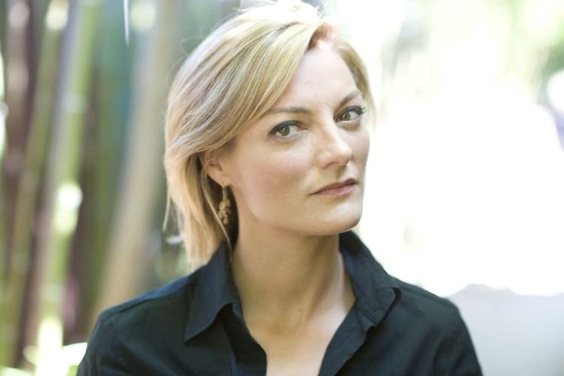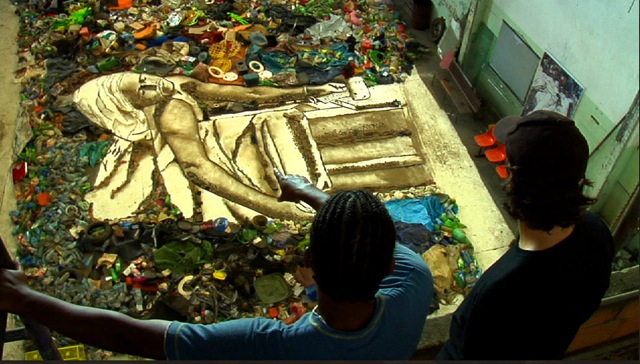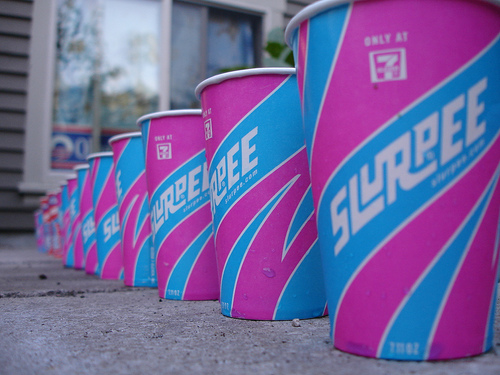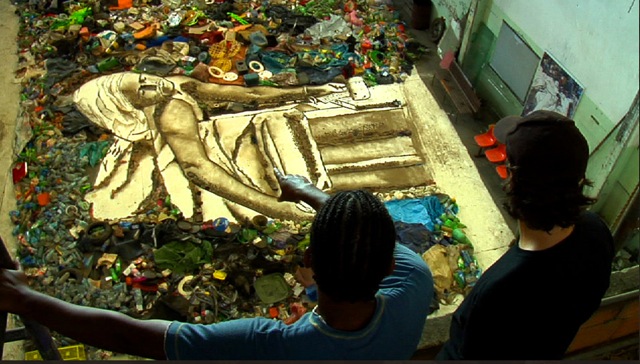 Lucy Walker.
Lucy Walker.
Editor’s note: After fascinating trash-art documentary Waste Land netted an Oscar nomination today for Best Documentary, we’re republishing this interview with director Lucy Walker. Enjoy!
Any filmmaker will tell you that simply getting a movie produced and into theaters is hard. If it’s a documentary — particularly one about, say, the loathsome wastefulness of our society or the prospect of atomic annihilation — it’s even harder. Yet director Lucy Walker (full disclosure: she’s a friend of mine) has managed that feat twice this year. July saw the release of Countdown to Zero, about nuclear proliferation. And this month her film Waste Land is playing in New York and Los Angeles after wowing the festival circuit.
The central figures in Waste Land are Brazilian-born, Brooklyn-based fine art photographer Vik Muniz and the crew of catadores — garbage pickers — he meets at the world’s largest landfill, Rio de Janeiro’s Jardim Gramacho. Muniz went to Jardim Gramacho to create massive portraits of the catadores, using the very garbage they spend their lives harvesting from fetid mountains of trash.
The portraits, inspired by images from the Western art canon such as Jacques-Louis David’s “The Death of Marat,” were essentially massive mosaics made of trash, laid out on a warehouse floor. Muniz photographed the mosaics, created large-scale prints, and sold them — giving his share of the proceeds back to the catadores.
Countdown took on a big, worldwide issue — getting rid of nuclear weapons — that plays out at the very highest level of policymaking. It was filled with talking heads, including Jimmy Carter and Mikhail Gorbachev, and it was capable of inducing near panic in its audiences. Owen Gleiberman of Entertainment Weekly wrote that it bordered on “nuclear-anxiety porn.”
The concerns behind Waste Land are just as global and just as vital: the huge amount of waste that the world produces and where it ends up. But because it highlights the very difficult lives of those who survive by picking up the pieces, Waste Land is much more personal and intimate. It includes long poetic scenes set to the ethereal music of Moby.
The transition in scale was a welcome one for Walker, whose previous films, The Devil’s Playground, about Amish teenagers, and Blindsight, about blind Tibetan orphans’ quest to climb Mount Everest, have garnered her a small room’s worth of awards.
Her filmic output matches her energy. In person, Walker talks breezily, quickly, almost breathlessly. It’s almost like she’s trying to squeeze in the last three months of her life into a single hour of catch-up. Razor-sharp intelligence and wit combine for a rapid-fire, invigorating conversation — one that moves, like her movies, from the personal to the big picture in a single breath. We talked at a furious pace about women in filmmaking, about the dress she wore to her premiere in New York (made out of a trash bag), and about her latest two movies.
 The artist Vik Muniz and one of his subjects look over a work in progress.“I think they complemented nicely, because Waste Land is such a small story and Countdown is such a big story,” she said. “Can one art photographer change life in a garbage dump is a small question, and can nuclear weapons be stopped is such a big question.
The artist Vik Muniz and one of his subjects look over a work in progress.“I think they complemented nicely, because Waste Land is such a small story and Countdown is such a big story,” she said. “Can one art photographer change life in a garbage dump is a small question, and can nuclear weapons be stopped is such a big question.
“It was really nice for me to have Waste Land,” Walker said of her post-Countdown world. “With the story and the people, it’s very uplifting.”
The question of whether or not art can change people’s lives becomes a point of contention in the middle of the movie. Muniz is convinced that even if he is showing the catadores a world they can’t remain in — he takes one worker to London for a high-flying art auction where his portrait is sold — the process of becoming exposed to art still enriches their lives.
The same question could be posed to audiences: Can seeing a film, however beautiful and moving, change a person’s awareness of and relationship to the enormous amount of waste in our society?
Walker is hopeful that the answer is yes.
“When you get to know something, you make better decisions,” she said. “It’s a very gentle awakening process. You can’t help, if you watch this movie, to become more aware of waste in every way, and I sort of trust people to — in becoming more conscious — make their own better decisions, whatever that means for them. It’s very much a character-driven, story-driven thing,” she went on. “People will be reminded that art can be transformative. It’s a question of the movie: Can art transform lives for the better? And I think the answer is yes.”
For Walker, the combination of the catadores and Muniz was “perfect.” “It’s about recycling, it’s about treasures from the garbage,” she said. “I think it’s sort of mythic, sort of a — it’s a phoenix rising from the ashes — it’s a mythic resurgence. It’s a beautiful idea, it’s a natural cycle of things. It’s the most beautiful idea that treasures comes from trash on every level.”
Watch the official Waste Land trailer:




